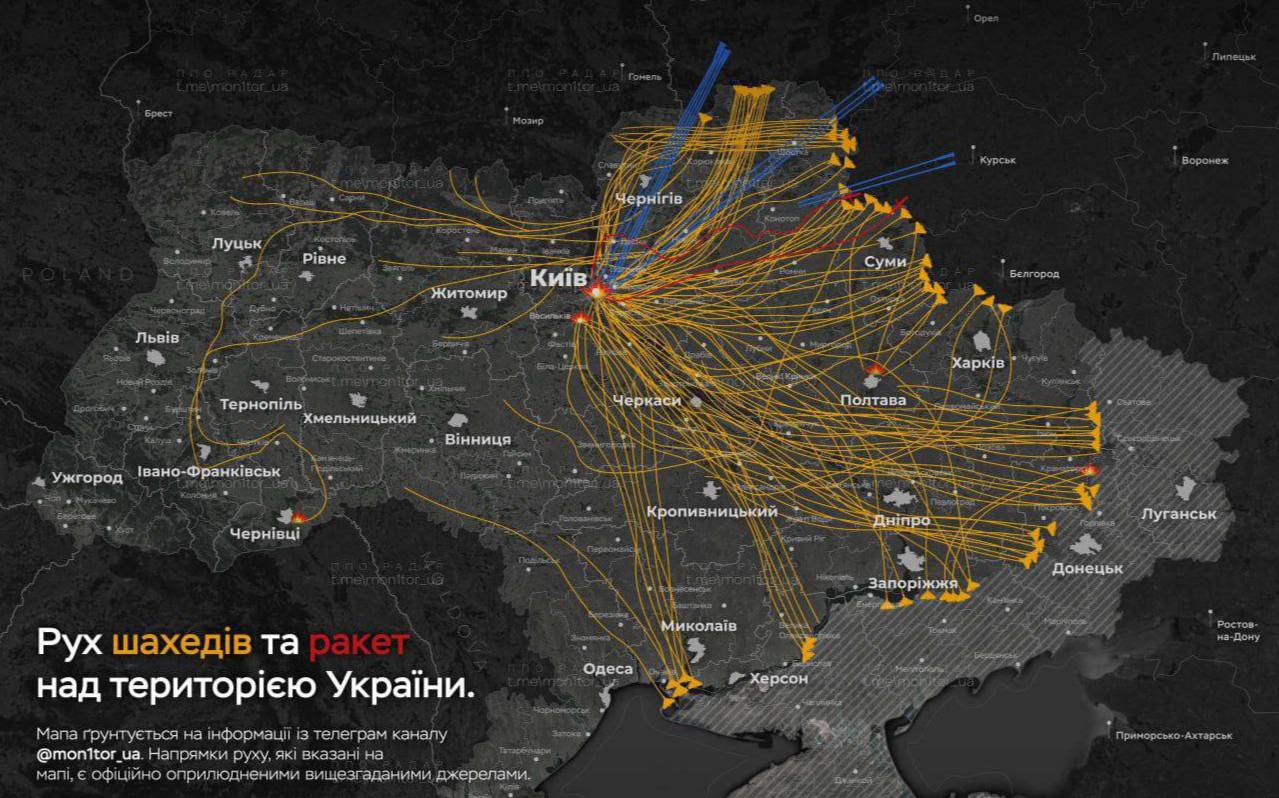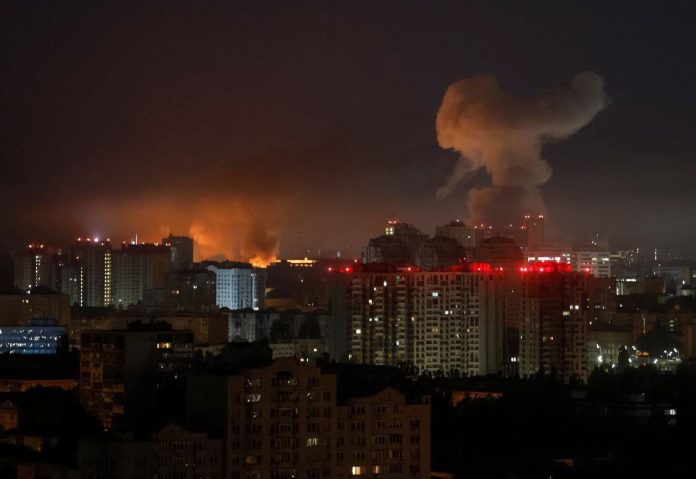On the night of 10 July, Russian forces continued to strike Ukrainian territory, firing missiles and about drones at Kyiv, Chernihiv, Sumy, Poltava, Kirovohrad and Kharkiv regions.
According to Ukrainian President Volodymyr Zelensky, 18 projectiles, including ballistic missiles, and about 400 attack drones struck Ukraine on 10 July.
A day earlier, Russia launched a record 728 drones across Ukraine, with the attack lasting almost 10 hours and conducted from four directions. The rising frequency of large-scale strikes signals that Russia has moved from individual missile shelling from limited positions to “serial” attacks with cheap, mass-produced drones.

One of the key targets was an airfield in Vasylkiv, Kyiv region, struck after a massive raid by Geranium (Shahed 136) drones. According to intelligence reports, Russia has recently modified these drones by equipping them with high-speed Nvidia Jetson Orin chips for autonomous guidance and Nasir satellite navigation systems with Chinese-made antennas. This increased their survivability against electronic jamming.
The strike on Vasylkiv represents a strategic shift, as Russia is deliberately destroying air defence positions and logistical hubs. For instance, on 6 June, US Patriot SAM positions near Kyiv were hit, paralysing the capital’s defences. NYT analysts predict that by autumn 2025, Russia will regularly launch more than 1,000 drones in a single barrage.
Later, Ukrainian media reported about fires in Kyiv following Russian drone and Iskander missile strikes. The targets were reported to be the Artem military plant, shipbuilding company Kuznia na Rybalskomu, Kyivmetrobud, Central Design Bureau of Machine Building, and Meridian (development and production of sophisticated radio measuring equipment), all allegedly related to Ukraine’s military industrial complex.
Disruption of aid and collapse of air defences
The collapse of Ukraine’s air defences is taking place against the backdrop of a systemic crisis of allied support. Politico reports that Kyiv has been pursuing to establish contact between Ukrainian Defence Minister Rustem Umerov and Pentagon chief Pete Hegseth since 1 July. While the US has resumed some deliveries, including 155mm shells and GMLRS missiles, the scale is classified and clearly insufficient to repel massive Russian attacks.
The crisis is exacerbated by divisions in Europe. Outgoing Polish President Andrzej Duda publicly criticised Ukraine and allies for utilising the military airfield in Rzeszów, a key hub for arms supplies.
I think there were issues where we could have shown a little bit that we couldn’t be bypassed or ignored. But we didn’t. And that was a mistake. For example, I believe that both the Ukrainians and our allies just think that the airport in Rzeszów and our motorways belong to them, as if it was theirs. But it’s not theirs. It’s ours. So if someone doesn’t like something, we shut down and goodbye.
He also threatened a complete halt to transit through Poland, saying, “Deliver aid by sea, by air, I don’t know, drop it with parachutes. Make it up if you think you don’t need us.”
Notably, in April 2025, the US formally left the coordination of the logistics hub in Rzeszów to Poland, but Warsaw is excluded from international bodies where aid to Ukraine is agreed upon. In this regard, Duda partially blocked the conclusion of the NATO summit in Vilnius, protesting that Poland was excluded from key logistical issues.
Ukraine losing its war of attrition
Ukrainian air defences, deprived of reliable supplies of interceptors and missiles, are physically unable to repel the growing swarms of Russian drones. On the front, the situation is no better: the shortage of infantry, as mobilised troops avoid the front line due to high casualties and poor command, and the destruction of infrastructure are leading to the loss of land.
In Ukraine’s Dnipropetrovsk region, Russian troops already control the village of Dachne, and in Luhansk region they have intensified their assaults near Hrekivka, where the Armed Forces of Ukraine repel up to 30 attacks daily.
The main issue remains the catastrophic setback in military production. Russia ramped up its monthly production of attack drones by placing drone factories deep inside its territory. whereas Ukraine’s facilities remain vulnerable to Russian strikes, largely due to a lack of air defence systems.
